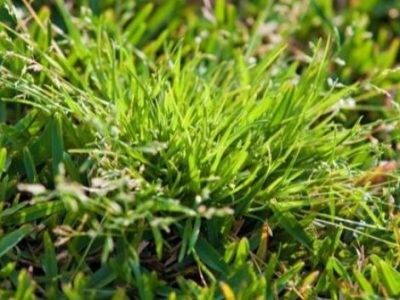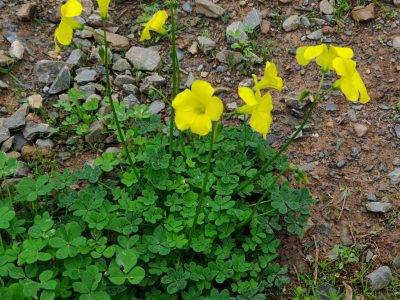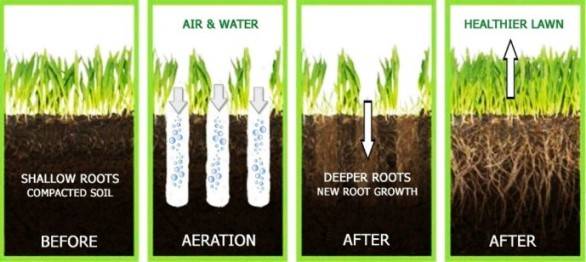Akers Monthly – July 2023

Working Through the Winter Blues
The cold wet weather has well and truly hit!
Read on for some essential tips and advice to keep your garden thriving throughout July, and start thinking about preparing for spring.
Mowing
During winter it is important to continue a regular mowing schedule. Although you can reduce the frequency of mowing to every few weeks, depending on your lawn type, it is still important for keeping your lawn healthy and giving it a consistent growth pattern and helps reduce weed growth. If left too long between mows, the lawn leaf becomes too long and will hold moisture for longer, leaving it more susceptible to diseases. Given the amount of rain and dampness we are currently experiencing in Adelaide it may be tricky to find the right timing to mow, but we encourage you to get out there when the sun is shining!
Ensure you are using a higher mowing height than in spring/summer to allow the lawn to absorb more sunlight and keep itself strong. We recommend following the 1/3 rule, meaning not to remove more than one-third of the grass blade length at a time, even less if you have a Winter Dormant lawn. This avoids stressing or scalping the lawn, which is the last thing you want for your lawn during winter as it can cause browning of your lawn, which can lead to diseases and weeds.
Finally, take care when mowing during winter, as mowing while your lawn is too damp or wet can result in tearing and bruising of the leaf. If the soil is soaked, mowing can also lead to ruts forming and an uneven finish. Make sure to remove any wet clippings, as if left on the lawn they can smother the grass, causing die back
Lawn Dormancy
A large majority of Adelaide lawns are classed as ‘warm season’ grasses. This means that come winter they will enter a state of dormancy that will reduce growth rate and cause some lawns to go off-colour or brown. Lawns will have a different level of dormancy, depending on lawn type, soil temperature, and weather conditions. While some may look like they are struggling or dying, be assured that they will ‘wake up’ once spring hits and the soil starts warming up again.
Is your lawn looking a bit off-colour?
Try Colour Guard, a natural grass pigment that instantly restores the colour of your lawn and is harmless to pets, your family and the environment. As an added bonus it also acts as a liquid fertiliser! Just one application can give your lawn up to three months of great colour
Weed Invasion?
If you haven’t already, join us on our Facebook page as we continue ‘Weedy Wednesday’ to help you identify, treat and remove some of the local weeds that are popping up in your turf this season. We are specifically looking at weeds we are getting questions on, and even finding in our own lawns. Check out a couple of our latest posts below, and give our page a follow to keep up to date!

Winter Grass
A very common grassy weed that grows in tufts/clumps. It is easily recognisable by its pale green leaf that grows higher than the lawn, and its triangular seed heads. It is fast growing and can spread incredibly quickly through your lawn.
Read More Here…

Sour Sob
Before they produce their distinctive yellow flower, Soursobs look a lot like and are regularly confused with clover or oxalis. The best way to identify Soursob is by the small black spots on the leaf. Persistence is key regarding the eradication of this pesky weed!
Read More Here…
Have you got weeds? If you would like to know some more information on the weeds invading your lawns or gardens, send us your weed photos! We will arm you with the knowledge you need to stop them, and may even use it in an upcoming post!
We stock a number of different weed control options in our instore and online shop, see the range here. Alternatively, we can apply some weed treatments as part of our Follow Up Service. Call us on 8326 3255 to enquire or book in.
What is Lawn Rejuvenation?
We recently sent out an email checking in on your lawns and offering free lawn assessments! If you are still on the fence let us explain to you the process and benefits of getting your lawn rejuvenated once the weather warms up. Spring will be here before you know it, you don’t want to miss your spot!
What does a rejuvenation involve?
Depending on your lawn type, both coring and scarifying are usually done together to aid in rejuvenating a lawn, along with applications of conditioners, fertilisers and topdressing.
Coring

Coring is the process of aerating the lawn by extracting plugs of lawn and soil, to alleviate compaction and allow for water, nutrients, and oxygen to have direct contact with the root system. A machine is used to extract plugs evenly across the lawn, every 2 to 3 inches. They can then either be removed and discarded, or can be left to break down into the soil.
Akers of Lawn recommend this process on lawns that have either:
- Dry, hardened soil
- The lawn dehydrates quickly
- Compacted, soggy soil
- Moderate thatch layer
Coring is highly recommended to be done yearly on lawns that have a clay soil underneath, or lawns that struggle with water absorption. Lawns that receive regular coring are easier to mow as they are less dense and can save up to 50% on watering costs due to a quicker absorption rate.
Scarifying

Scarifying is the process of thinning out the thatch layer to allow for new growth, with the use of a specialised machine. Done correctly and the right time of year, this does not damage the lawn and it allows for easier maintenance.
Depending on mowing habits and lawn type, your lawn will inevitably develop a thick, coarse, spongy texture to it over time. This is called a build-up of ‘thatch’, which is the result of a deep matting of the root system and presents as a layer of compressed stems, roots and grass blades which accumulate between the top of the soil and the green tips of the grass. A lawn dense with thatch is more at risk of fungus or disease forming and is often lacking in nutrient and water.
The average household requires their lawn to be scarified every 3 to 5 years.


Often the result just after a scarify doesn’t look so great, but during spring and the warmer weather with just a few weeks of sunshine it will green up beautifully. Your lawn will also be easier to mow, feel soft and even underfoot, and be healthier overall.
Product of the Month

Akers Certified Organic Fertiliser is a multi-purpose pelletised, nutrient-balanced fertiliser with a blood and bone base. It breaks down quickly in your soil and acts as both a soil and plant conditioner!
To learn more, or buy now, click the button below!
Head to our Facebook page and follow the instructions to enter to win one of our Product of the Month!
Dal’s Gardening Tips
- July is the time to prune your roses. Don’t be afraid to do a good cut back – roses love it! Fruit trees and deciduous trees also need to be pruned. However, only lightly prune citrus and leave the Apricots until after they have finished fruiting in Summer.
- Now is a good time to spray deciduous trees with Pest Oil as a preventative against mites.
- At the first sign of pink buds on trees, spray them with Copper to help prevent leaf curl.
- Frost sensitive plants may need some extra protection, consider covering them with frost cloth, and moving potted plants under shelter.
Tips on Growing Broad Beans
- Pinch out the top of the plants when pods are 7-10cm (3-4”) long. This will encourage an earlier crop of well-filled pods and help to deter blackfly.
- Broad Beans prefer a rich, well dug soil, but most soils will give a satisfactory crop. If possible, add a general fertiliser to the soil before sowing. Seedlings emerge in 10-14 days.
- Give them support by way of stakes or a teepee trellis to assist in holding up the weight of their harvest.
- Plant Broad Bean seeds from early Autumn to early Winter. As they prefer a cooler climate, they will produce an abundant crop. In warmer regions, plant in late winter for a spring harvest.
Lawn Tips
- Eradicate broadleaf weeds with our Seaweed and Gone Spray (only available as a service).
- Continue removing fallen leaves from the lawn, especially in shaded areas to avoid lawn die back. You can add these dead leaves to your compost!
- Winter is a great time to carry out some repairs/maintenance on your lawn mower and garden tools.
Did you know we have loyalty cards?
 Love our products?
Love our products?
SO DO WE!
Make sure you get your hands on one of our Akers Product Loyalty Cards!
How they benefit you:
Get a stamp for every Akers of Lawn product you purchase instore. On your 5th purchase you will receive 25% off an Akers of Lawn branded product, and on your 10th purchase you will receive one FREE!
Do you have any lawn or garden questions?
We want to hear from you!
Send us any questions or topics you want covered and they may get featured in our next Akers Monthly!
As always, thank you for your support!
Best wishes,
Dal, Jacqi and the Akers of Lawn team
